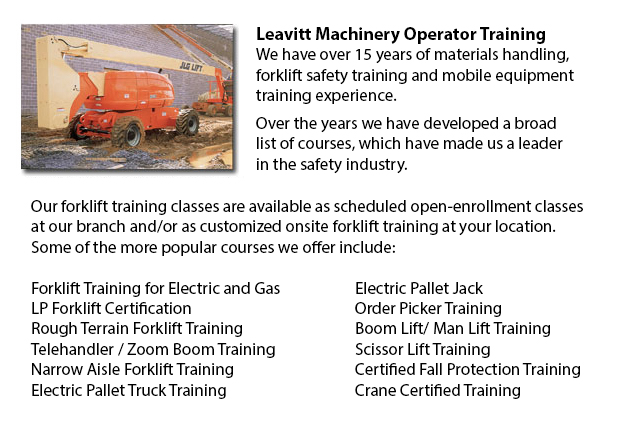
Boom Lift License Scottsdale - To operate an aerial boom lift, operators should be licensed through training that can be obtained using both classroom sessions and practical training and by attaining a boom lift license. Instruction must be given with respect to the type of aerial lift that will be utilized on the job. A License is required for any person who works on or operates an aerial boom lift.
Vehicle-mounted aerial devices include the following work vehicles: aerial ladders, extensible boom platforms, articulating boom platforms, vertical towers, and any combination of these types.
There are some basic safety regulations that apply to all boom lifts. Worker safety whilst in the basket is a top priority. Workers should have on a body harness and lanyard attached to the basket or boom. Never tie off to an equipment, an adjacent pole or a structure. Employees must stand on the basket floor, and never climb or sit on the edge of the basket. The manufacturer's load restrictions should be followed.
Aerial lift operators must be authorized to utilize the equipment. The operator should be familiar with all the aspects of the device and should have access to the manufacturers manual that should be kept within the lift. Operators are responsible for making certain that safety procedures are followed in operating the lift. A daily test of lift controls should be done. Position outriggers and set brakes (if they are utilized) on a stable surface or on pads. If working on a slope, make use of wheel chocks.
Never move an aerial lift truck with an elevated boom while workers are in the basket. Extensible boom platforms and articulating boom utilized as employees carriers must have plainly marked, accessible, upper controls. Except in emergency situations, lower controls must not be utilized to override upper controls unless the individual inside the lift gives permission.
Do not wear tree or pole climbers shall while working from an aerial lift.
The insulated part of the aerial lift must not be altered.
Make sure that the booms are carefully checked, that the equipment is correctly cradled and the outriggers are in the stowed position before moving.
Make sure that lifts being utilized in or near power lines are di-electrically tested and follow local regulations.
-
Crane Certification Scottsdale
Crane Certification Scottsdale - The Crane Certification Program consists of the industry suggested subject matter that would teach the efficient and safe operation of cranes. The person would train in the following: pre-operational, operational and... More -
Heavy Equipment Operator Training Scottsdale
Heavy Equipment Operator Training Scottsdale - Heavy equipment operator training facilities that provide good standards within the business, offering field performance tasks and additional equipment training are really sought after training features.... More -
Heavy Equipment Training School Scottsdale
Heavy Equipment Training School Scottsdale - HEO or the heavy equipment operator courses would provide you with the skills and knowledge required so as to enter the workforce as an entry level heavy equipment operator. In this twelve week course plus... More -
Crane Operator Classes Scottsdale
Crane Operator Classes Scottsdale - For the operators and the supervisors, current and new, the crane operator training course is suitable for all. Course content deals with applicable federal, provincial and state safety regulations. The training's... More -
Forklift Operator Certification Scottsdale
Forklift Operator Certification Scottsdale - Certification for forklifts are required to guarantee the safe operation of forklifts for those employers in warehouse, construction and industrial environments. The training needs to involve a method of e... More -
Crane Training Schools Scottsdale
Crane Training Schools Scottsdale - Our different programs for Mobile Crane Operation are meant for skilled operators who needs certification or re-certification, and for inexperienced people who are searching for their very first job as an operator... More -
Aerial Boom Lift Training Scottsdale
Aerial Boom Lift Training Scottsdale - Aerial Boom Lift Training is necessary for any individual who supervises, operates or works near boom lifts. This particular type of aerial lift or aerial work platform is utilized for lifting individuals, mater... More -
Telehandler Training Scottsdale
Telehandler Training Scottsdale - Telescopic handlers often known as telehandlers for short, are an extremely popular piece of heavy construction equipment. They are widely used in the construction and agricultural industries. These equipments have f... More

Forklift Training Scottsdale
TOLL FREE: 1-888-254-6157
Scottsdale, Arizona
forkliftcertificationscottsdale.com
Email Us
About Us


